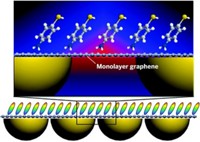Advertisement
Grab your lab coat. Let's get started
Welcome!
Welcome!
Create an account below to get 6 C&EN articles per month, receive newsletters and more - all free.
It seems this is your first time logging in online. Please enter the following information to continue.
As an ACS member you automatically get access to this site. All we need is few more details to create your reading experience.
Not you? Sign in with a different account.
Not you? Sign in with a different account.
ERROR 1
ERROR 1
ERROR 2
ERROR 2
ERROR 2
ERROR 2
ERROR 2
Password and Confirm password must match.
If you have an ACS member number, please enter it here so we can link this account to your membership. (optional)
ERROR 2
ACS values your privacy. By submitting your information, you are gaining access to C&EN and subscribing to our weekly newsletter. We use the information you provide to make your reading experience better, and we will never sell your data to third party members.
Materials
Holey Metal Films Go Transparent
Thin films coated with a light-absorbing dye and dotted with microscopic holes can unexpectedly appear transparent
by Mitch Jacoby
February 7, 2011
| A version of this story appeared in
Volume 89, Issue 6
Thin metal films dotted with microscopic holes can unexpectedly be made transparent by coating the metal with light-absorbing dye molecules, according to a study (Angew. Chem. Int. Ed., DOI: 10.1002/anie.201006019). This discovery may spawn new research directions in optical materials and photonic devices that are under investigation for energy-conversion applications. James A. Hutchison, Thomas W. Ebbesen, and coworkers at the University of Strasbourg, in France, used an ion-beam method to drill an array of 100-nm-diameter holes in a 200-nm-thick silver film. They measured the film’s optical transmission before and after modifying it with a 30-nm-thick layer of a thiacarbocyanine compound. In the absence of the dye, the main transmission band peaks at 518 nm and almost no light is transmitted at nearby wavelengths. But when the dye is present, the system transmits roughly 700-nm light intensely, the team reports. This phenomenon, which the researchers propose is based on electron waves known as surface plasmons, counterintuitively opens transmission windows at wavelengths at which the molecules absorb strongly—exactly where one would expect to see no transmission.





Join the conversation
Contact the reporter
Submit a Letter to the Editor for publication
Engage with us on Twitter